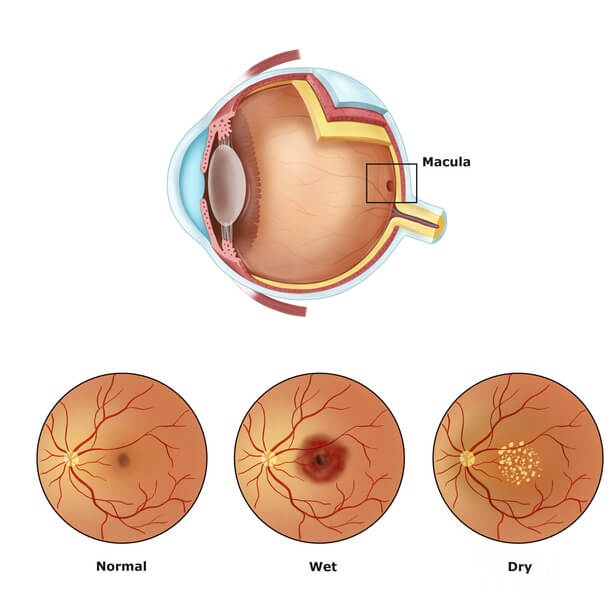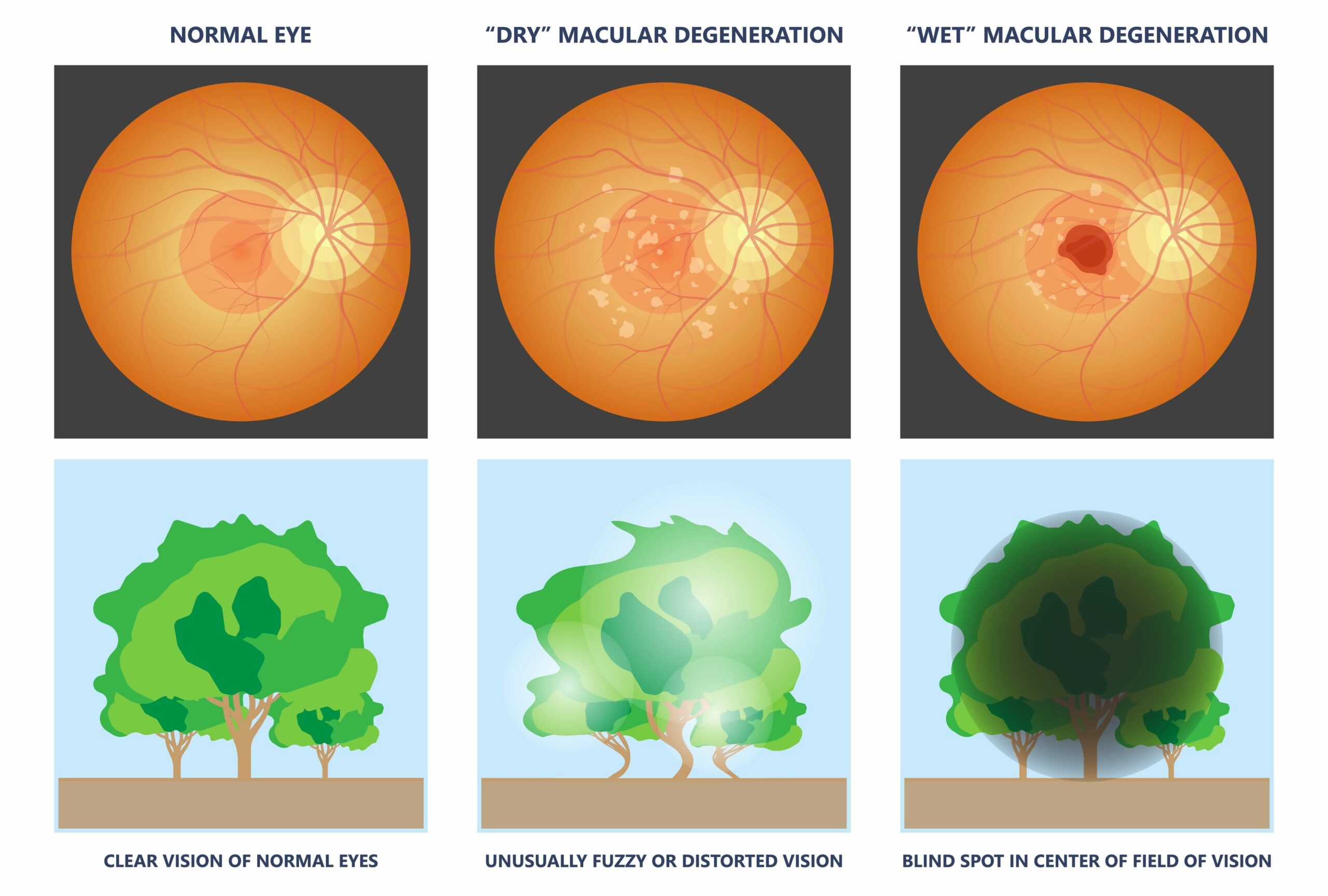AMD
The retina is the tissue lining the back of your eyeball. it is very delicate and it is full of nerves that funnel in and become the optic nerve, which is where your eye plugs in to your brain. The macula is the part of the retina that gives the eye clear vision in the direct line of sight. Blood vessels and veins center out from the optic nerve, surround the macula (the macula itself remains a-vascular) and branch out across the retina.
After age 50, the risk for an eye disease called Age Related Macular Degeneration (AMD), increases drastically. There are two types of AMD- Dry AMD, which is the less severe form and its development is more gradual. Wet AMD is more acute and causes more severe damage to vision. In either case, Early detection and care is KEY!
The information included below is derived from the Mayo Clinic Website:
https://www.mayoclinic.org/diseases-conditions/dry-macular-degeneration/symptoms-causes/syc-20350375
https://www.mayoclinic.org/diseases-conditions/wet-macular-degeneration/symptoms-causes/syc-20351107#:~:text=Wet%20macular%20degeneration%20is%20a,the%20direct%20line%20of%20sight.
Dry macular degeneration is a common eye disorder among people over 50. It causes blurred or reduced central vision due to the breaking down of the inner layers of the macula. The macula is the part of the retina that gives the eye clear vision in the direct line of sight.
Dry macular degeneration may start in one eye before developing in the other eye. It also may develop in both eyes at the same time. Over time, vision may worsen and affect the ability to do things, such as read, drive and recognize faces. But having dry macular degeneration doesn’t mean you’ll lose all your sight. Vision loss is typically central, and people retain their peripheral vision. Some people have only mild central vision loss. In others, it can be more severe. Early detection and self-care measures may delay vision loss due to dry macular degeneration.
Symptoms
Dry macular degeneration symptoms usually develop gradually and without pain. They may include:
- Visual distortions, such as straight lines seeming bent.
- Reduced central vision in one or both eyes.
- The need for brighter light when reading or doing close-up work.
- Increased difficulty adapting to low light levels, such as when entering a dimly lit restaurant or theater.
- Increased blurriness of printed words.
- Difficulty recognizing faces.
- A well-defined blurry spot or blind spot in the field of vision.
Dry macular degeneration can affect one or both eyes. If only one eye is affected, you may not notice any changes in your vision. This is because your good eye may compensate for the affected eye. And the condition doesn’t affect the side vision, so it does not cause total blindness.
Dry macular degeneration is one of two types of age-related macular degeneration. It can progress to wet macular degeneration, which is when blood vessels grow and leak under the retina. The dry type is more common, but it usually progresses slowly over years. The wet type is more likely to cause a relatively sudden change in vision resulting in serious vision loss.
Wet macular degeneration is a long-lasting eye disorder that causes blurred vision or a blind spot in the central vision. It’s usually caused by blood vessels that leak fluid or blood into the macula . The macula is the part of the retina that gives the eye clear vision in the direct line of sight. The wet type of AMD always begins as the dry type. Early detection and treatment of wet macular degeneration may help reduce vision loss. In some instances, early treatment may recover vision.
Symptoms
Wet macular degeneration symptoms usually appear suddenly and worsen quickly. They may include:
- Visual distortions, such as straight lines seeming bent.
- Reduced central vision in one or both eyes.
- The need for brighter light when reading or doing close-up work.
- Difficulty adjusting to low light levels, such as when entering a dimly lit restaurant or theater.
- Increased blurriness of printed words.
- Difficulty recognizing faces.
- A well-defined blurry spot or blind spot in the field of vision.

